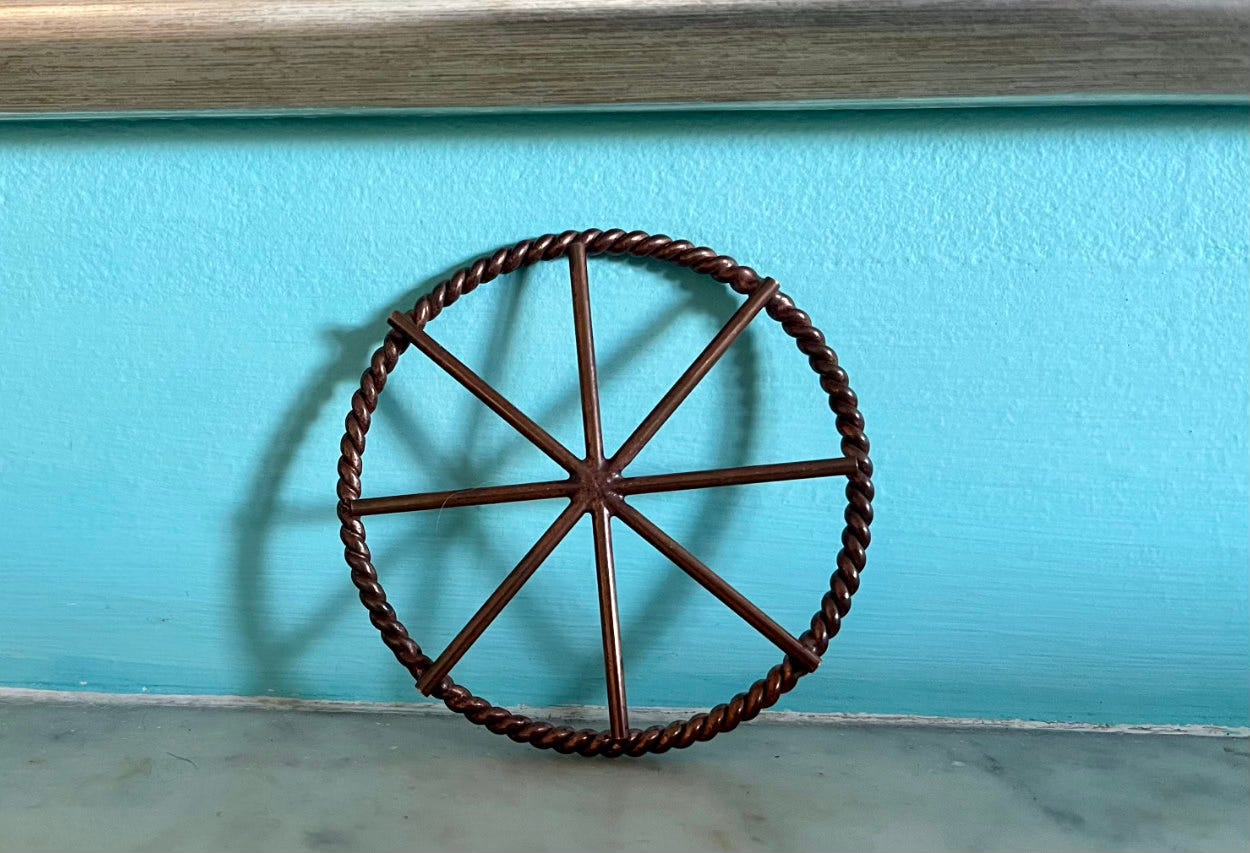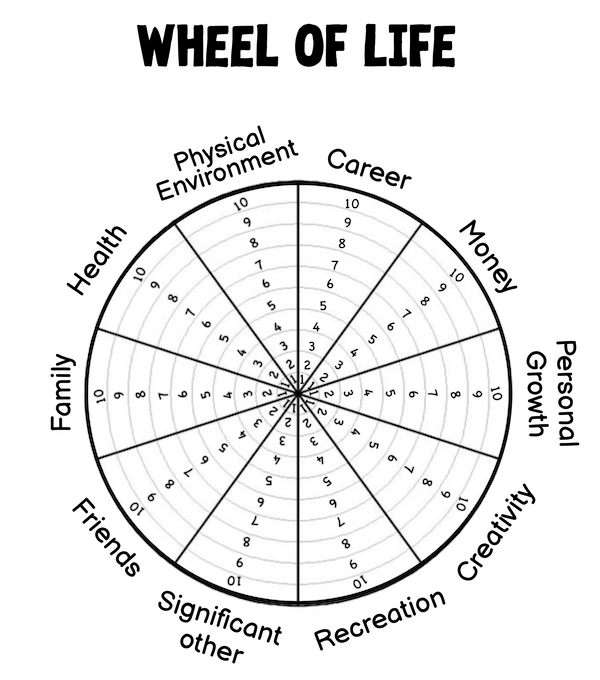Get Unstuck with the Wheel of Life
A simple visual tool for finding balance, clarity, and direction
Before you can change anything, you need to see it clearly.
Have you ever had that vague feeling that something is not quite right in your life, but you can’t quite put your finger on it? Maybe your career is going great, but you still feel stressed and unfulfilled. This is a sign your life is not in balance.
I want to introduce you to a fantastic tool for creating a quick visual snapshot. It’s where you can see your entire life on a single page.
The tool is the Wheel of Life, first developed by Paul J. Meyer back in 1960. It’s brilliantly simple. It turns the abstract idea of ‘life balance’ into a practical journey of self-discovery.
Imagine your life as a circle divided into slices, such as work, health, family, and self-development. You then rate each area on a scale of 1 - 10.
The goal isn’t a perfect score
You’re not chasing perfection; a 10 in every area of your life is an impossible standard.
The aim is to create a “smoother, rounder shape” on your wheel, which signifies harmony and balance between the different parts of your life. For example, a good wheel shape to aim for long term would be a mixture of 7, 8 and 9 scores, with maybe a few 6’s.
Here is a simple scoring scale:
1 = No attention
2–3 = Neglected: rarely gets time/energy
4–6 = Adequate: inconsistent; needs attention
7–8 = Strong: consistent habits; room to refine
9–10 = Thriving: deeply satisfying and sustainable
The power isn’t in the numbers, it’s in the picture
Rating each area of your life is the first step, but the real magic happens when you join the dots.
You get a unique, irregular shape that visually highlights which areas are thriving and which are being neglected.
The first time I did this on a coaching course, the insight it gave me was profound. Health, family, and friends scored low; a wake-up call I couldn’t ignore. It gave me clarity on what I needed to do to rebalance my life and create an action plan.
You define your own wheel
The Wheel of Life is not a rigid, one-size-fits-all tool. Common variations range from 7 to 10 categories.
The 10 I use with clients as a starting point are:
1. Health, 2. Physical environment, 3. Career, 4. Money, 5. Personal Growth, 6. Creativity, 7. Recreation/Fun, 8. Significant other/Romance, 9. Friends, 10. Family.
You can personalise the categories to reflect what a balanced and fulfilling life means to you.
For example, I work with many creatives. So, it makes sense to have a ‘Creativity’ section on the wheel. If you are a student, you might include ‘Education.’
This is where the tool becomes truly yours.
By defining your own areas, you shift from a generic exercise to a personal audit of what matters to you.
It means the tool is measuring what you value, not what a template dictates. Making the insights you gain more personal, relevant, and practical.
Create your own wheel and score it
Take 5-10 minutes for this exercise.
Print out my template with 10 areas; either the pre-filled version with categories or a blank one you can customise.
> Wheel of Life with categories
Alternatively, sketch a circle on paper and add your categories. I recommend 8–10. Then add in the rankings from 1 to 10 for each area.
Before you score…
If you only use your mind to rate each area, you might choose a ‘socially acceptable’ number that you think you should have.
If you engage your heart/body, you will get a more accurate result. To score each area, I recommend that you don’t rush…think, pause and feel.
Notice how your body reacts as you pick the number.
Does it tense and your breath become shallow? Review and try again.
Or does it relax and the breath slow and/ deepen? If so, mark the number with a circle or dot on the relevant area scale.
When you’ve rated every area, connect the scores.
Take a moment to reflect on the shape; it may surprise you. In one simple visual, you’ll see where your life needs attention.
Taking the insights and making them goals
A common comment I have from clients is:
“I can see my career is great, but I have 3-5 areas with low scores I don’t have the time to work on all of them”.
Understand that every area of your life is important. If you work on the ones with lower scores, it will boost the overall balance of your life.
Be strategic.
For example, focusing on areas such as health and friendships can increase your energy and happiness. This, in turn, can enhance your work and reduce your risk of burnout.
The secret is to look at the areas with low scores and pick small, achievable goals you can integrate into your life. Be specific with actions and dates.
For health, one small step might be to take a 10-minute walk at lunchtime rather than eat your lunch at your desk. And then slowly build from there; set an inspiring goal, maybe a 5K run in 6 months.
For friends, message a friend you haven’t seen in a while and invite them out for coffee and a catch-up. Book the venue and date. Start small. Build your attention sustainably.
It’s a living tool
This tool’s real power is unlocked through regular use.
You can return to it monthly, quarterly, or annually to track your progress and maintain awareness as your life and priorities shift.
I invite you to do this exercise today, complete your Wheel of Life. Then identify three small goals for the areas with lower scores you can act on.
Know that this tool is a fantastic resource for your ongoing personal development.
Make it your own.
If this sparked your curiosity and you want to explore the tool more deeply, I can help. Reach out today for a free chat. I would love to hear from you.






I love how you bring the body into the scoring process. Once we tap into the wisdom that the body carries we can make more aligned choices!